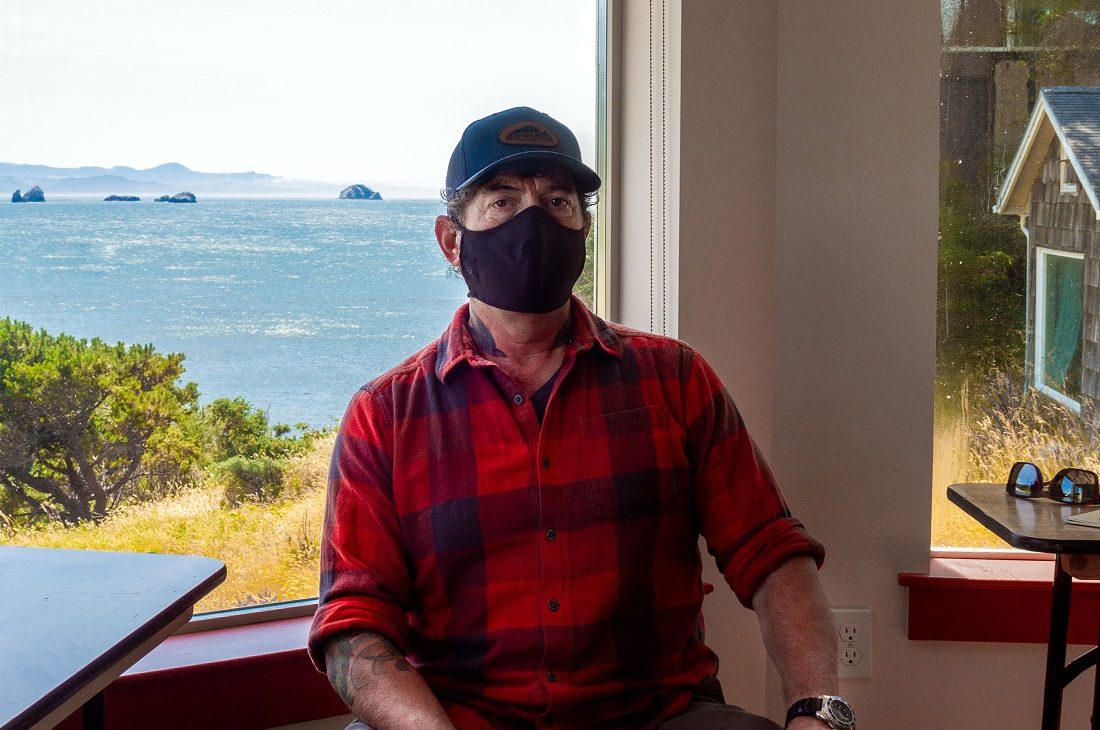Tom Calvanese’s sense of place for Redfish Rocks started during his time as a commercial urchin diver. Despite the area now being off limits to urchin harvest and fishing, Calvanese never left the waters that became Redfish Rocks Marine Reserve. Join us as we talk with the urchin diver — turned fisheries scientist — turned research field station manager and explore his knowledge of the reserve, how he came to know these waters, and his continued connections with this place.
The Community Spread of Tom Calvanese’s Sense of Place for Redfish Rocks
By : Vaughn Robison
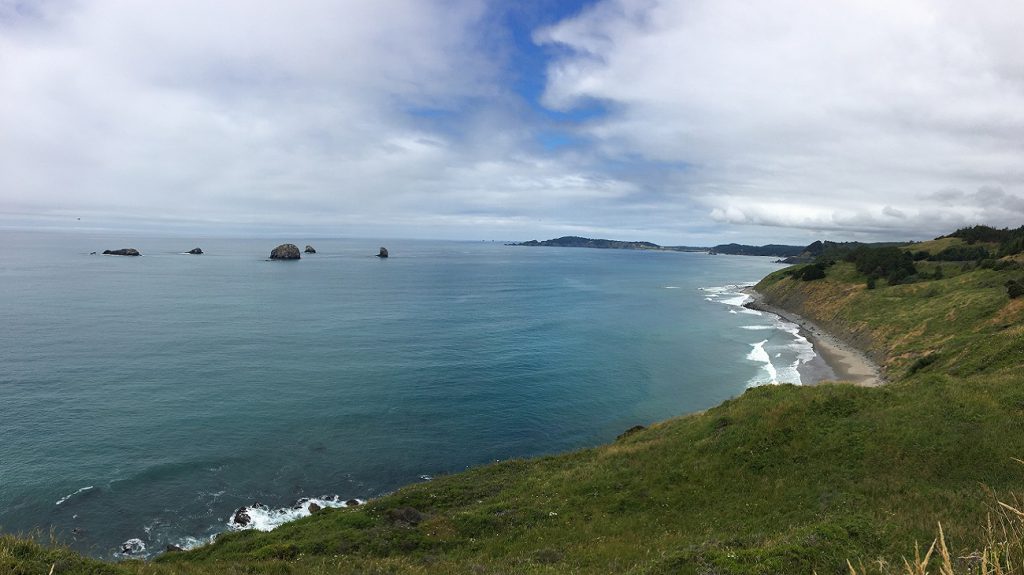
The seminar room at Oregon State University’s Port Orford Field Station sits above a fish processing facility with an expansive view of Redfish Rocks Marine Reserve. In typical weeks, station manager Tom Calvanese fills the room’s chairs, and sometimes available standing room, with members of the public. This is not a typical week, though, as Calvanese cautiously prepares to welcome research teams to this remote community amid the COVID-19 pandemic. With the seminar series, that shares research with the local community, paused for the summer Calvanese sanitizes and fills only two seats. Today, he sits down to discuss his own connection and knowledge of the area.
“You can go to the beach or anywhere in this area and see it,” he says of Redfish Rock Marine Reserve. “I think that is one of its strengths, in a way, because people can really connect to it.”

Despite his masquerade of personal protective equipment, Calvanese’s connection to the area is as visible as the place itself.
Calvanese’s eyes widen as he points through the window to the reserve’s namesake sea stacks, and they light up as he plumbs the depths of his memory to recount their features from the surface to the seafloor. His arms animate as he tells of rock walls lined with strawberry and white plumose anemones. His gestures mimic the schools of juvenile rockfish swimming downward from the surface as they mature. He tells of tiny hermit crab colonies perched atop underwater pinnacles and the composition of the substrate on the seafloor below them. His eyes well as he recounts with wonder of a particular memory of three schooling rockfish species separated into distinct vertical layers in the water column.
“The rocks are like signals of life that attract fish and fishermen,” he says emotionally of Redfish Rocks, “These islands are life magnets.”
Calvanese has been magnetized to the 2.7 square-mile area of Redfish Rocks Marine Reserve for almost a decade of his life. During this time, and within this place, he has performed a variety of roles that have led to his current position as field station manager. While these roles may appear polarized from the surface, looking deeper, they are all connected.
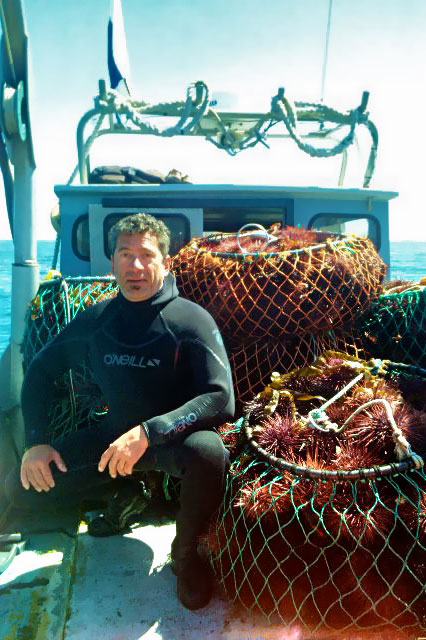
“When I see those emerging rocks, my mind immediately goes to what’s down there. It takes me to experiences of working as an urchin diver,” says Calvanese of the role that offered him his first encounter with the place.
Calvanese becomes visibly emotional as he reflects on the job and claims that it may have been his favorite job to date. His mask muffles a chuckle when he later admits that he was likely the least efficient and most distracted urchin diver on the team. Calvanese’s immersive first contact with the area had a lasting impact.
“I’ll say for sure, in retrospect, that the experiences from those dives were way more valuable than the money that I made,” he says of the dividends that would pay off in later roles within the same waters.
The reserve’s waters were closed to urchin harvest and fishing starting in 2012, but Calvanese didn’t leave this particular area of the ocean alongside the local fishing fleets. Instead, he partnered with them in another role.
Calvanese had been using his job as an urchin diver to help fund his graduate education in fisheries science at Oregon State University (OSU). His studies are what attracted Calvanese to Port Orford in the first place, but he arrived in an unusual position as a student without a preformulated research project. Responding to the concerns of the local fishing community, Calvanese developed his Fishtracker study to monitor the movement patterns of six rockfish species and the potential for the impending marine reserve to protect them. His engagement with the fishing community also, quite literally, floated the project.
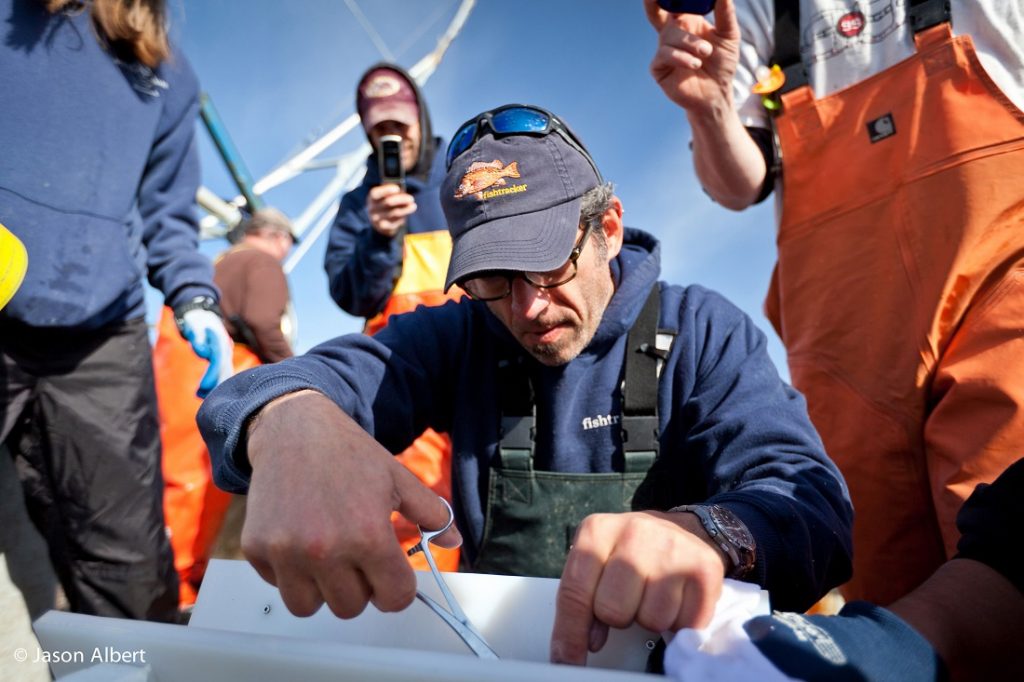
“It was a true collaboration,” Calvanese says of the study that relied on trips with fishermen to capture and implant rockfish with acoustic telemetry tags. These carefully implanted tracking devices, as Calvanese explains, would later be monitored by 34 receivers that were designed to endure the elements using advice from local commercial crabbers.
It was an experience that allowed Calvanese to develop a new role as a university researcher. More than that, it taught him to navigate the unique path of being one whose work was not only driven by the community, but also shared with and performed by its members.
“To go out there with fishermen and download data and have everyone on the boat go a little crazy,” he says of the experience, “that obviously affects my perception of the place.”
A relic from Calvanese’s experience in this role welcomes visitors to the university field station he now manages. A sign that reads “I do my research with Port Orford Fishermen” hangs in the window of Calvanese’s office at the field station’s entrance.
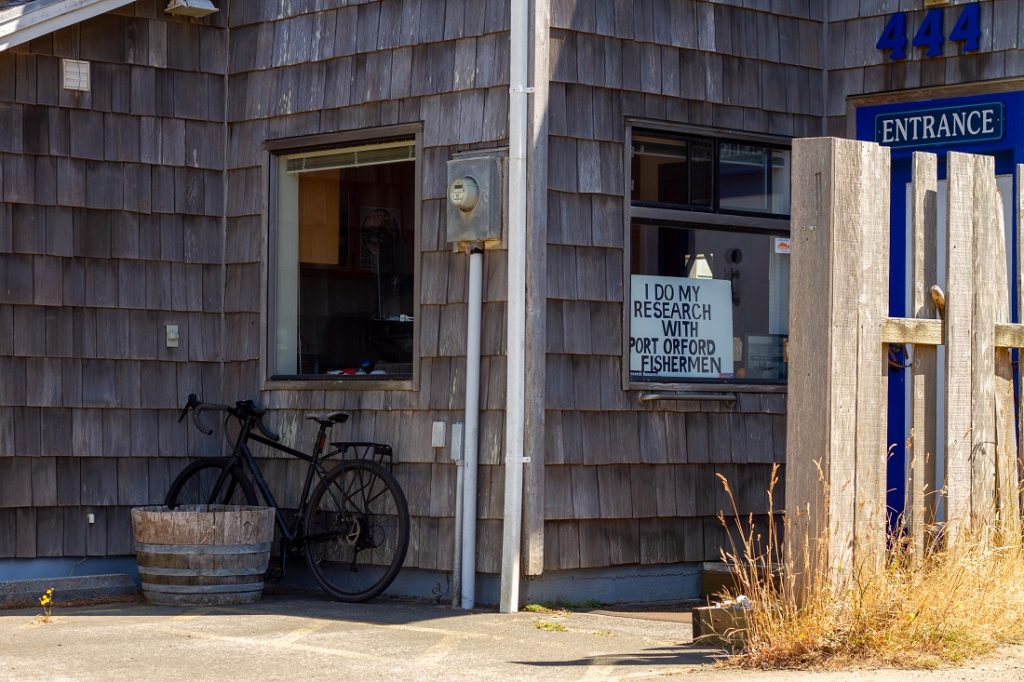
Following the completion of his graduate program, Calvanese landed in his current role to manage the field station that OSU developed shortly after the creation of Redfish Rocks Marine Reserve. The station operates through the university’s Marine Studies Initiative (MSI), and is equipped with the seminar room, office space for employees, lodging for researchers, laboratories, and a SCUBA air tank fill station. Calvanese is tasked to manage these resources in alignment with the station’s mission to “support student learning, scientific research, community priorities, and economic opportunities, and foster coastal stewardship and sustainability by supporting access to the region’s unique marine and terrestrial ecosystem.” The field station provides this support not only for the university, but also its partners that include the Oregon Department of Fish and Wildlife that manages Redfish Rocks Marine Reserve.
When asked if he could perform this role elsewhere, Calvanese doesn’t hesitate to say no.
“It’s really important for people to understand the importance of having a field station here,” he says. “A lot of the work we want to do here requires this on-site capacity.”
While operated by the university, the on-site capacity of the station is in part a response to the Port Orford fishing community’s relationship to Redfish Rocks and the process through which it became a marine reserve.
“This field station really is here as the result of some really engaged local people who wanted to see the research happen in association with the marine reserve,” he says, “and it was actually local commercial fishermen who organized to propose the reserve, and as part of that proposal, they were pretty clear in their expectation that it would be studied.”
Beyond the expectations from the community to use Redfish Rocks as a living laboratory, Calvanese’s explanation of the field station’s capacity to provide that experience mirrors his own history with the place.

“I don’t think there’s much of a point to bring someone to a remote field station to sit them in a classroom,” says Calvanese. “With all the students, researchers, and others who come here, the goal is to give them opportunities to have direct experiences of what it means to be here.”
Despite its importance to Calvanese, what it means to “be here” is hard for him to pin down. The meaning isn’t specific to the individual roles in which he has performed in Redfish Rocks Marine Reserve during the last decade. Rather, it has evolved alongside the reserve itself and its capacity to provide the experiences from the perspective of different roles. For Calvanese, the meaning is in part a culmination of the roles he has performed, but it isn’t a destination.
“I don’t want it to be static,” he says of his evolving meaning of the place. “I want new discoveries.”
To date, Calvanese’s discoveries have developed alongside the evolving capacity to make them. That capacity has also evolved alongside the community’s relationship to the place, as well as new institutions that have developed. What was once a prized fishing spot became a marine reserve, a living laboratory, an interactive classroom, and a hub of community engagement.
“I see these things as all interconnected,” says Calvanese, “One of the reasons I was willing to step forward into this role with the Marine Studies Initiative is because I do think that there is a lot to the idea of different kinds of engagement that lends itself to an integrated approach to problem-solving in a small place like this.”
Calvanese points out that in a place like Port Orford, “that engagement means that a field station needs to be really integrated with the commercial fishing community,” he says before reiterating that there is a fish processing facility directly below the seminar room.
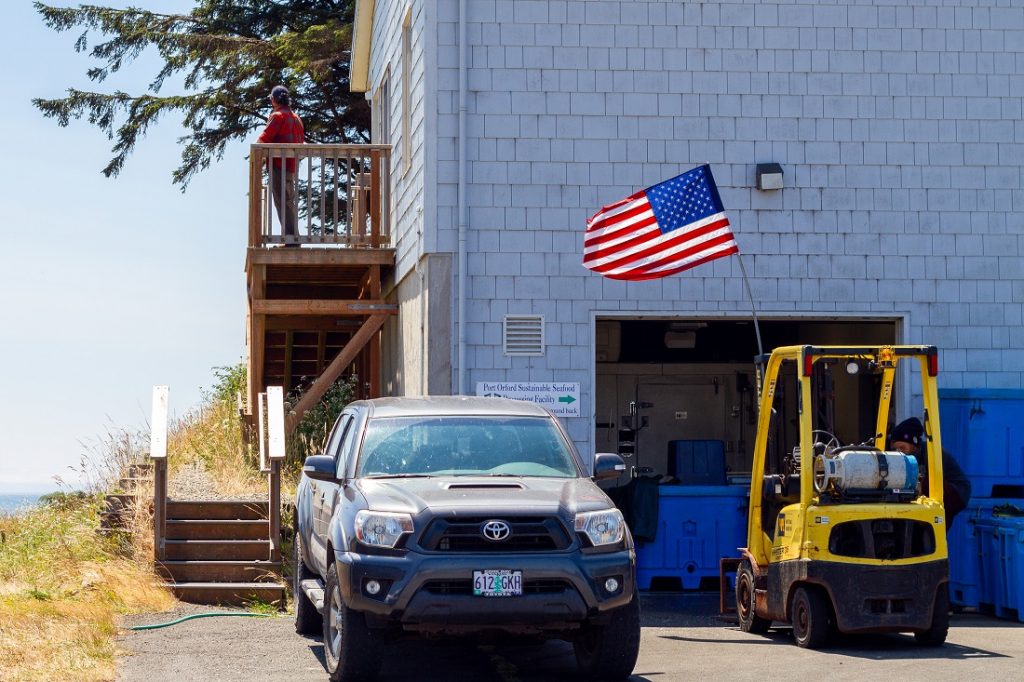
The integrated approach of the field station closely mirrors Calvanese’s culmination of roles in the last decade. But the self-identified fish nerd depended on the places to fill a role much longer in the making. Despite a lifelong fascination with fish and their behavior, Calvanese’s professional trajectory followed an unconventional path for most fisheries scientists. Before arriving in rural Port Orford as a graduate student, Calvanese spent decades as a community organizer in urban areas.
“I ended up in a place where, in a certain way, I feel like I made my childhood dream a reality,” says Calvanese as his mask pulls tight with a smile. “And it feels really good to do that.”
When asked how he hopes this self-actualization translates to the students he mentors here, Calvanese pauses. He acknowledges that sometimes he loses sight of this in the daily operations of the field station’s many moving parts, and is thankful for the moment of reflection and reconnection.
“That’s what it’s really about, that’s why I’m really here,” he says as he chokes up again, “What I do and how I go about it is to give the students and others those experiences.”
Calvanese regains composure and reflects on what he hopes were life-changing experiences for past students who created projects at the field station and shared them with the community through presentations in the seminar room. He reflects on his ability to provide students with such comprehensive experiences of Redfish Rocks without his own multi-faceted history with the place.
“I could do parts of it, but I wouldn’t be as good at it,” he admits. “Authenticity matters to me, and that authenticity comes through on the receiving end as well.”
On the receiving end of Calvanese’s mentorship this summer is Tom McCambridge, an incoming senior studying marine biology and chemistry at OSU. McCambridge is camped out in the station’s converted surf shack for a 10-week OSU-Marine Studies Initiative Internship that focuses on marine reserves interpretation. Central to his internship, McCambridge is creating videos about Redfish Rocks Marine Reserve and the science it produces with support from the field station.
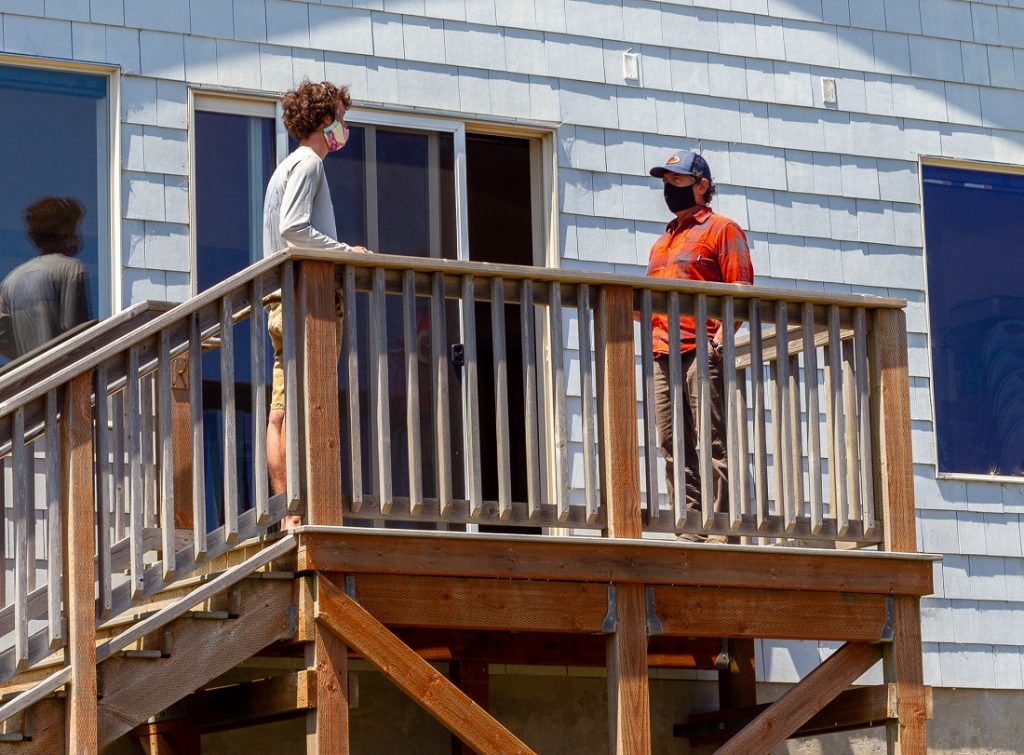
The enthusiastic student had visited Port Orford once before his internship started, but he admits he was fairly unfamiliar with the place before his arrival for the summer. When asked how he’s learned the most about both Redfish Rocks Marine Reserve and Port Orford, McCambridge is quick to call out his mentor.
“Mostly, right from Tom Calvanese,” he says before explaining how. “We do a lot of our meetings on the beach, which is super helpful because he’s picking up shells and rocks and I’m learning more ecology that way than in the classroom.”
When asked about the most insightful thing he has learned from Calvanese this summer, McCambridge responds “He’s really close with all the fishermen in town, and it takes away that idea that it’s conservation versus fishing or fishing versus conservation.”
It’s a notion the student says he has heard before but never experienced in practice. “It’s been reinforced, but this is the most in your face. I’m here working on conservation alongside the fishermen. I had always thought that, but here I’m getting experience with it, which is really cool.”
Before leaving to get some fish and chips for lunch, McCambridge opens his laptop and shares the early cuts of a video he’s producing. The video details the ecology of Redfish Rocks and the capacity for its biodiversity to support a myriad of discoveries as a living laboratory.
“It’s just absolutely saturated with life,” he says of the place before showing hand-drawn animations of Redfish Rocks. The area from surface to the seafloor comes alive as the animation unfolds. Rocks walls are lined with anemones. Other invertebrates appear on pinnacles. McCambridge describes how fish will appear at various levels of the water column, and it’s hard not to wonder if they’ll appear in distinct vertical layers as Calvanese recalled from his own experiences.
Back in the seminar room, Calvanese is asked if he considers himself as an ambassador to Redfish Rocks Marine Reserve through his role as the station manager. He doesn’t hesitate to answer, adding that his ambassadorship extends beyond the role outlined by his job description.
“That’s the responsibility that comes with experience,” he explains, “and it’s your responsibility to share it. I do it with all the visitors and students. There are informal interactions. There’s a steady stream of impromptu little mini-seminars that go on all the time, not just here, but at the grocery store, the bank, the post office. Over time, I guess I’ve just become ‘that guy,’ the marine scientist guy here in Port Orford, and I’m ok with that.”
Even with the masks and six-foot distancing protocol, Calvanese’s sense of place for Redfish Rocks Marine Reserve is contagious. It’s the one thing he isn’t afraid to spread between the field station and the local community this summer.
